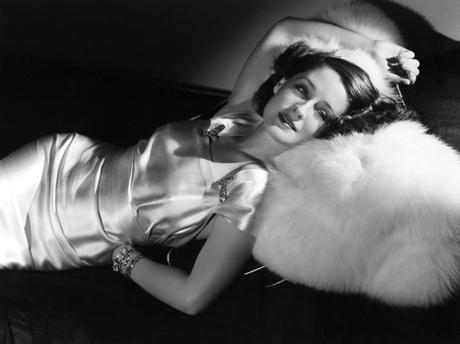
By the late 1920s, Norma Shearer was one of MGM’s top actresses; consistently starring in films that were popular with the critics and successful at the box office. After facing setbacks in the early days of her career, she had become a bona fide star, proving show business dignitaries like D.W. Griffith and Florenz Ziegfeld wrong when they said she would never succeed as an actress. When she married producer Irving Thalberg in 1927, the two became one of Hollywood’s biggest power couples. But Norma Shearer always had a vision for life and her career and she knew it was time for a change.
Now that she was on top, she wasn’t about to let her image grow stale. She’d survived the transition from silents to talkies, but she needed to do more to keep audiences interested. Shearer was eager to shake up her image by playing a new kind of modern woman; not quite the personification of youth as flappers were, but a more sophisticated, independent adult woman who broke with traditional values and mores. Irving Thalberg, on the other hand, had a different path in mind for his wife’s career. The theater world had stars like Ethel Barrymore and Lynn Fontanne and Thalberg wanted Norma Shearer to have that kind of grand stature and respectability and he didn’t think those types of roles would bring her to that level. However, Shearer wasn’t the type to just give into her husband’s ideas when it came to her career.
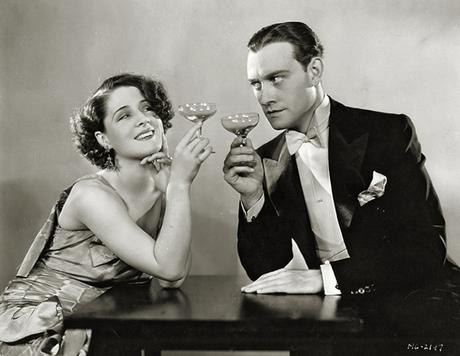
When MGM bought the rights to the bestselling novel Ex-Wife by Ursula Parrot, Shearer knew it was just the project she was looking for. The title was changed to The Divorcee for the film version and Shearer made it her mission to land the part of Jerry, a woman who divorces her husband when she discovers his double standards regarding fidelity. Shearer later said that Jerry was, “Very strong, almost ruthless…she was perfect for me.”
Thalberg wasn’t so sure. He didn’t think Shearer was glamorous or sensual enough for the part. Undeterred, Shearer made an appointment with a then-unknown photographer by the name of George Hurrell to have some boudoir style photos taken. Shearer walked into Hurrell’s studio completely focused on proving to Thalberg that she could handle the role of Jerry. When Thalberg saw the photos from the session, he was impressed and the role was hers.
Taking on The Divorcee was a big gamble, but it paid off in spades. When it was released in 1930, it became an immediate success. Audiences loved Shearer in this kind of role and when the Academy Award nominations were announced, Shearer landed two Best Actress nominations — one for The Divorcee, the other for Their Own Desire. It was The Divorcee that would make Shearer an Oscar winner, elevating her to a whole new level of stardom. Her marriage to Thalberg may have made her the First Lady of MGM, but her Oscar win cemented her status as Queen of the Lot.
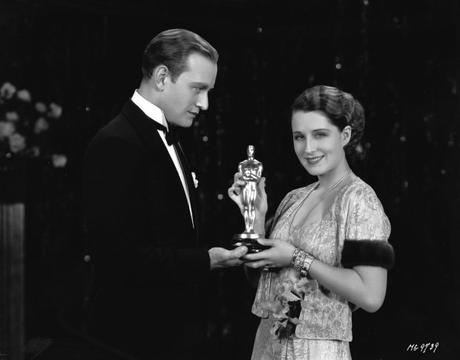
Throughout the pre-code era, Shearer would go on to play many other independent women who challenged societal conventions. In Let Us Be Gay, she played another woman who left her cheating husband and became a notorious woman of affairs. Her character in Strangers May Kiss wasn’t interested in marriage. 1931’s A Free Soul gave Shearer the chance to play the free-spirited daughter of a lawyer who becomes infatuated with a gangster played by Clark Gable. These sorts of films were provocative, but didn’t push audiences too far. Her characters took a walk on the wild side, but in the end, realized that lifestyle wasn’t right for them.
When the pre-code era came to an end in 1934, Shearer once again had to change gears and she moved into the “noble woman/prestige picture” era of her career, starring in lavish, big budget pictures featuring other top-tier talent. She’d become a grand dame of Hollywood like Thalberg had wanted her be, but she reached that level on her own terms and the next few films of her career would also be on her terms. Thalberg made it possible for her to star in Romeo and Juliet and Marie Antoinette when she expressed an interest in doing so. But after Thalberg passed away in 1936, maintaining that level of autonomy over her career became more difficult.
While 1939’s The Women has gone one to become one of the most celebrated comedies of the 1930s, when viewed in the context of Shearer’s career and of her role as MGM’s Queen of the Lot, it actually reflects her waning power at the studio. The Women is far from being a bad movie; it’s the last truly great movie of Shearer’s career. But was Mary Haines one of the most fulfilling roles Shearer played in her career? No.
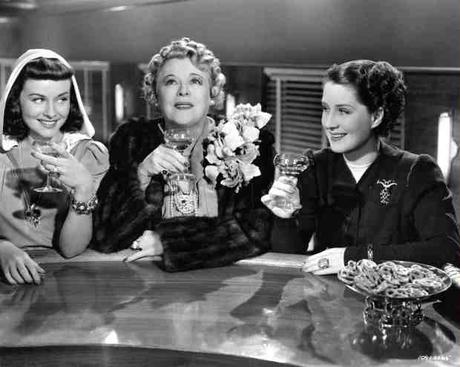
By the time The Women went into production, Norma Shearer was entering an uncertain stage in her career. Romeo and Juliet was the last movie of hers Thalberg oversaw before his death and he had put the wheels in motion for her to do Marie Antoinette before he passed away. The movies she made in 1939, Idiot’s Delight and The Women, were the first ones she’d made in a long time without Thalberg on her side. Even though she was a force to be reckoned with, so was Irving Thalberg and now that he was gone, Shearer simply didn’t have as much power as she used to.
Despite the fact that The Women is one of Shearer’s most enduring movies, it’s not a movie she was ever interested in making. While she described Jerry in The Divorcee as strong and almost ruthless, she thought Mary Haines was a boring character and initially turned it down. But after Louis B. Mayer found out about her short-lived affair with Mickey Rooney, Shearer had been taken down a notch and reluctantly agreed to do The Women to help keep the peace with Mayer.
If you’re familiar with Shearer’s pre-code era films, it’s easy to understand why she found Mary Haines so dull. In both The Women and The Divorcee, Shearer plays happily married, well-to-do women who discover their husbands are cheating on them. In the end, both women choose to reconcile with their husbands. But because of the production code, Jerry and Mary aren’t able to react to that news in the same way. When Jerry tells her husband about her own affair, she is outraged by her husband’s hypocrisy, divorces him, and sets out to carry on as many affairs as she wants to. Mary, on the other hand, is literally railroaded into a divorce she doesn’t want.
The Women is based on a successful stage play so it wasn’t intended to be a remake of The Divorcee, but it’s the closest anyone was going to get to doing one in the production code era. Here, Shearer was being asked to play a role that had quite a bit in common with one of her greatest career triumphs, but that was totally devoid the material that made Jerry such an interesting character. Mary Haines may have had two years to grow claws — Jungle Red — but she’s a completely declawed version Jerry. By lobbying to play Jerry in The Divorcee, Shearer was taking control of her career. By feeling obligated to play Mary Haines in The Women, she was beginning to lose control.
On the surface, The Women hardly seems like the sort of movie any movie star should feel disappointed to have been a part of. It features a cavalcade of some of the best female talent MGM had to offer, the great George Cukor directed it, it had a first-rate script, and Adrian created an astonishing wardrobe for the film’s characters. This was a major production; a far cry from the low-budget films some of Shearer’s contemporaries would later make when they were nearing the ends of their careers. But that doesn’t mean Shearer didn’t suffer several indignities during its production.
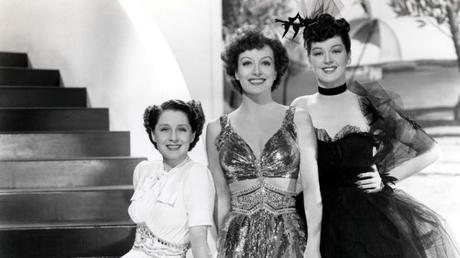
Another reason Shearer wasn’t interested in being in The Women is because she knew there was a good chance she could be upstaged and those fears weren’t exactly without merit. During that era, stars of Shearer’s magnitude would pride themselves in being able to command top billing in credits and on theater marquees, posters, and other promotional materials. They were considered to be “above the title” and that kind of prestige was reflected in their contracts. But one of the downsides to being in a movie that features so many other talented actresses is that those other actresses aren’t going to be content with being left out of the billing. Joan Crawford was a major star in her own right and fought to get her name up there alongside Shearer’s, so Shearer ended up being forced to share billing with her professional rival. As production continued and it became clear that Rosalind Russell was stealing a lot of scenes, she also fought to get her name up there and Shearer eventually had a third actress to share top billing with, although Rosalind Russell’s name takes up less space on the posters than Shearer’s and Crawford’s.
Having to share the screen with Joan Crawford also wasn’t a particularly enjoyable experience for Norma, either. Crawford had long felt that Shearer was given preferential treatment and first pick of all the best roles because of her marriage to Thalberg. The rivalry between the two was played up during the production to generate buzz in the gossip columns. While Shearer filmed her close-ups for the big dressing room confrontation scene, Crawford was sitting off camera, knitting as she read her lines back to Shearer; a move that would have been extremely unprofessional and disrespectful to do to any actor, let alone one of Norma’s stature. Eventually, Shearer got so fed up with Crawford’s antics that she asked Cukor to read the lines to her instead of Crawford.
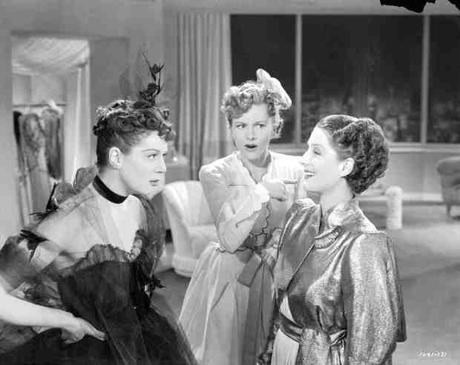
Although The Women is an immensely quotable film, unfortunately for Shearer, most of the film’s most memorable lines went to other actresses. In many cases, Shearer’s lines set up jokes, witty remarks, and biting comebacks for Rosalind Russell, Joan Crawford, or Paulette Goddard to deliver. So even though Shearer gets top billing, it ultimately feels like her character is a springboard that gives other actresses a chance to shine.
Even though The Women performed respectably well at the box office, it wasn’t enough for MGM to recoup the costs of production, continuing a trend of Shearer’s movies losing money. Romeo and Juliet was her first 1930s film to lose money and the extravagant production costs of Marie Antoinette made it another loss for MGM. Idiot’s Delight also lost money, making it one of the few movies Clark Gable made at MGM which lost money. 1940’s Escape was Norma’s last film to turn a profit; her final two films, We Were Dancing and Her Cardboard Lover, both also failed to break even.
After openly declaring that she wasn’t interested in playing Scarlett O’Hara in Gone With the Wind and turning down roles in Mrs. Miniver and Now, Voyager, Shearer retired from film in 1942. During the 1980s and 1990s, Shearer’s legacy was effectively rescued by home video. Thanks to home video, many of the films she made during the pre-code era became readily available to the general public for the first time in decades, giving people the chance to see her career in a new light. In the time between her retirement and the advent of home video, Shearer became most closely associated with the “noble woman/prestige picture” stage of her career. The Women, Marie Antoinette, and Romeo and Juliet were the movies of hers that would most commonly be shown on television or at revival screenings, not The Divorcee or A Free Soul, leaving many people with a very incomplete picture of her career. Even though she won an Academy Award for her work in The Divorcee, many were under the impression that Mary Haines was a more typical Norma Shearer role than Jerry.
The fact that The Women went on to be regarded as a genuine classic, one of the highlights of Hollywood’s golden year, did nothing to help soften Shearer’s opinion of the role over time. When author Gavin Lambert was interviewing Shearer for his biography on her, she told him that of all the movies she made with director George Cukor, the only one she ever cared to see again was Romeo and Juliet.
In the end, the career of Norma Shearer was largely defined by divorce. Playing a divorcee in one film was the first bookend of her era as a Hollywood megastar while playing a divorcee in another signaled the end of her reign as MGM’s Queen of the Lot.
Advertisements